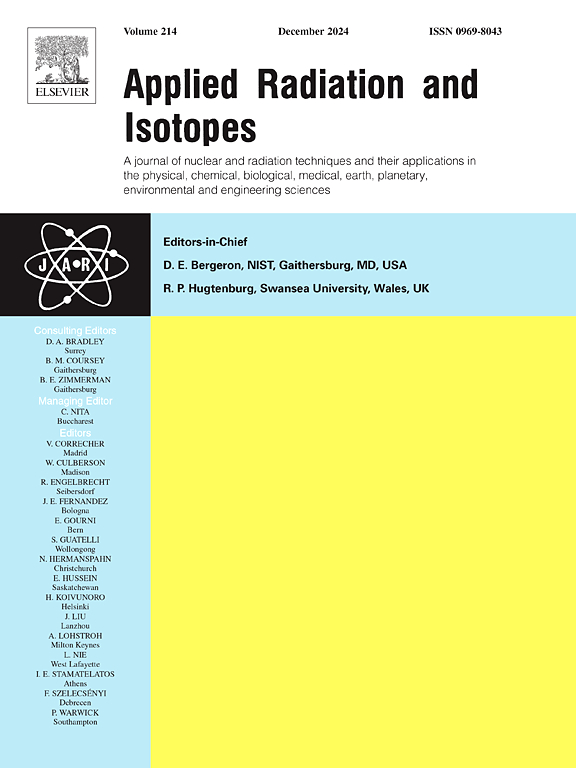Health risk implications due to uranium content in drinking water sources from the tectonically active zone of Garhwal Himalaya, India
IF 1.6
3区 工程技术
Q3 CHEMISTRY, INORGANIC & NUCLEAR
引用次数: 0
Abstract
Uranium is omnipresent in the earth's crust, and its high concentration in the water poses a different type of health risk to humans. In view of this, water samples were collected from several locations in the Uttarkashi district region of Uttarakhand, India. The collected water samples were analyzed using an LED Fluorimeter. The range of the uranium concentrations in the collected water samples was found to be 0.01–3.48 μg l−1 (ppb) with an AM (Arithmetic Mean) of 0.31 μg l−1 (ppb). The Pearson's r between uranium and some physicochemical parameters (pH, temperature and Total Dissolve Solids) was 0.10, 0.008 and 0.04, respectively. The calculated values of excess lifetime cancer risk, lifetime average daily dose, and hazard quotient were found to be well within the safe limit as suggested by many agencies. The Annual Effective Dose (AED) received by the different age groups was also found within the safe limit of 100 μSv y−1 recommended by the World Health Organization (WHO).
求助全文
约1分钟内获得全文
求助全文
来源期刊

Applied Radiation and Isotopes
工程技术-核科学技术
CiteScore
3.00
自引率
12.50%
发文量
406
审稿时长
13.5 months
期刊介绍:
Applied Radiation and Isotopes provides a high quality medium for the publication of substantial, original and scientific and technological papers on the development and peaceful application of nuclear, radiation and radionuclide techniques in chemistry, physics, biochemistry, biology, medicine, security, engineering and in the earth, planetary and environmental sciences, all including dosimetry. Nuclear techniques are defined in the broadest sense and both experimental and theoretical papers are welcome. They include the development and use of α- and β-particles, X-rays and γ-rays, neutrons and other nuclear particles and radiations from all sources, including radionuclides, synchrotron sources, cyclotrons and reactors and from the natural environment.
The journal aims to publish papers with significance to an international audience, containing substantial novelty and scientific impact. The Editors reserve the rights to reject, with or without external review, papers that do not meet these criteria.
Papers dealing with radiation processing, i.e., where radiation is used to bring about a biological, chemical or physical change in a material, should be directed to our sister journal Radiation Physics and Chemistry.
 求助内容:
求助内容: 应助结果提醒方式:
应助结果提醒方式:


